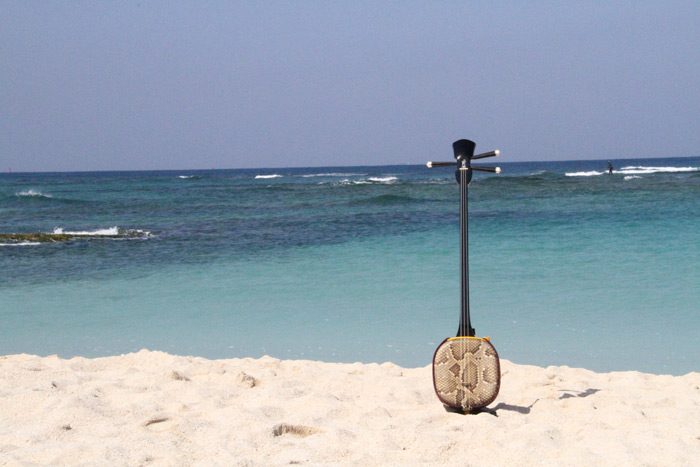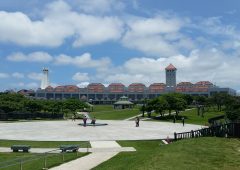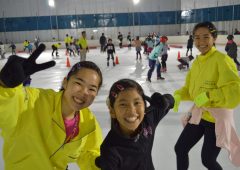2024.03.03
Sanshin, The Heart and Soul of Okinawa
The sanshin is easily the most recognizable musical instrument in Okinawa. Its distinctive, high-pitched sound can be heard throughout the island from soba shops and grocery stores, to live performances at beach parties and cultural festivals.
Theory has it that Okinawans adopted the sanshin from China about 600 years old during the Ryukyu Kingdom. Because of the sanshin’s similarities in both name and appearance to the Chinese sanxian, undoubtedly this is the case. Nevertheless, Okinawans of centuries past took it and made it their own. The result was an instrument unique in style and sound that evolved into a lasting and powerful icon of Okinawan culture.
The sanshin is a fretless, three-stringed instrument that closely resembles a banjo in shape and size. The word sanshin literally translates as “three-strings.” The dou (body) is covered in snake skin and the sou (neck) is handcrafted from wood with three karakui (wooden tuning pegs). The strings are made of nylon and can be white (Okinawa) or yellow (Amami). From top down, the strings are called uujiru (male string), nakajiru (middle string), and miijiru (female string). The sanshin is played by plucking the strings with a buffalo horn or ceramic bachi (traditional pick), creating a beautifully soft melody renowned for it’s depth and simplicity.
The sanshin became a popular instrument within the royal court of the Ryukyu kings and later pick up by commoners where it became an integral part of everyday life. During the 16th century the sanshin ultimately found its way to mainland Japan and became known as the shamisen. The instrument once again was adapted to meet cultural demands and became a permanent fixture of Japanese culture in kabuki plays and geisha performances.
Yet, the sanshin is more than a simple musical instrument, but a tool used by Okinawans to better understand their past, themselves and the world around them. For centuries, folk songs called min’you have been played by commoners throughout the Okinawa islands. More often than not, traditional folk songs are accompanied by drums and dance, and within these songs lies the true heart and soul of Okinawa’s long, storied history.
Following World War II, resources were limited, but the sanshin and the healing power of song and dance were needed more than ever. Thrifty, resourceful Okinawans, using what resources were available, made sanshin out of used tin cans, wood from bedframes, and parachutes string. These hastily made sanshin became known as kankara-sanshin and provided much needed solace and relief for a people torn apart by the miseries of war.
Many sanshin legends such as Rinsho Kadekaru were born out of the harshness and suffering of the post-war period. Another, Seijin Noborikawa, grew to rock star status and was even given the nickname the “Okinawa Jimi Hendrix” because his style of shredding on the sanshin.
The sanshin of modern times remains relatively unchanged from those of centuries past. Although, nowadays many artists tend to add their personal flair with custom designed colors and necks. In fact, custom sanshin have become an increasingly popular gift idea over the past couple of years.
In order to gain a deeper understanding of the sanshin and its impact on Okinawa history and culture, it’s a good idea to take a trail class and have a true hands-on cultural experience. There is no better way to feel more connected to the Okinawan spirit than through beautiful simplicity of the sanshin.


 2024.07.12
2024.07.12 2024.07.07
2024.07.07 2024.07.02
2024.07.02 2024.06.21
2024.06.21 2024.06.11
2024.06.11 2024.06.08
2024.06.08 2024.06.03
2024.06.03 2024.05.30
2024.05.30 2024.05.25
2024.05.25






